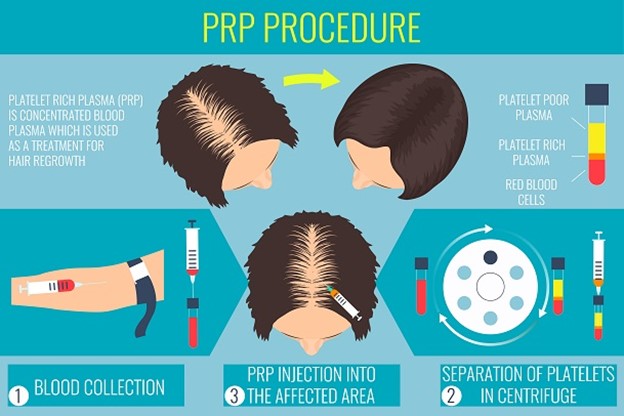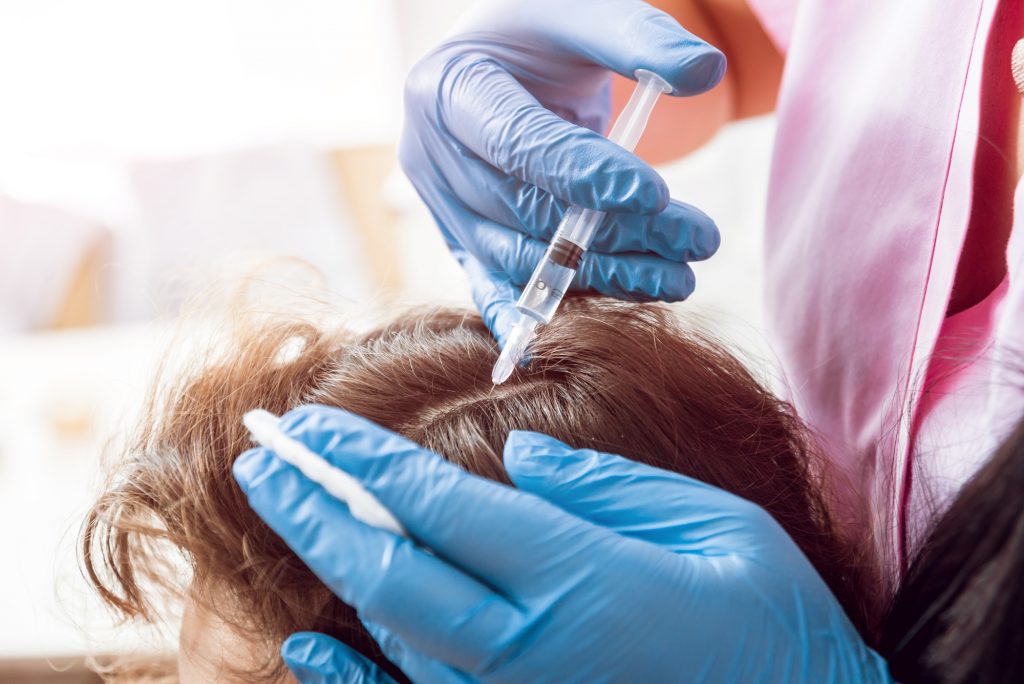Table Of Content

Generally speaking, the sooner you start treatment, the more options you have and the better your results, dermatologists say. Several serious diseases also attack the hair follicle, says Robert Brodell, a dermatologist at the University of Mississippi Medical Center. While alopecia doesn’t typically affect your physical health, the emotional and psychological distress it can cause are very real.
Health
The improved recovery, especially in well-known athletes of the time, attracted the media’s attention to the healing ability of PRP and started to become more widespread. PRP injections may be able to treat a range of musculoskeletal injuries and conditions. The doctor’s recommendations for how often a person should have PRP will vary depending on a person’s condition and the results of their initial treatment. The doctor may suggest having maintenance injections every 3–6 months once hair loss is under control.
FDA Approval
With PRP hair treatments, those platelets are drawn out and then injected into the scalp in hopes of promoting hair growth. As with most procedures, there is a careful process involved in using PRP for hair regrowth, beginning with a standard blood draw from the patient's arm. Growth factors, in a sense, play the role of messengers, signaling skin cells to function.
Will Popular Hair-Loss Products Help My Alopecia?
The risk of these side effects is low, and some studies have reported no side effects from the procedure. (4) It’s important to remember that not everyone will experience these side effects and for those who do, they will most likely pass quickly. Viral hair loss products have been gaining media popularity, but can they help with alopecia?
Alopecia Areata
The cost of PRP is quite variable and can be as little as $400 or as much as $1,500 or more per session. Comparing costs is difficult, as the equipment used and any additives have a significant impact on the cost to the provider. The skill and experience of the provider are also critical to success. Do not look for the cheapest or the most expensive office, but rather investigate experience and reputation above all. Hair loss can affect your self-confidence, especially when it comes to relationships.
Health Alerts from Harvard Medical School
It’s usually genetic, but it can also be triggered by diseases or disorders that attack the hair follicles. For example, sometimes a topical numbing lidocaine solution is applied to your scalp before injection. You may have to arrive early to a treatment session if this is the case.
Hairline International Launches Sonicated PRP- a cutting edge Hair Regeneration Therapy - Hindustan Times
Hairline International Launches Sonicated PRP- a cutting edge Hair Regeneration Therapy.
Posted: Fri, 22 Dec 2023 08:00:00 GMT [source]
The researchers concluded that PRP is a safe and effective method for promoting hair regrowth. Researchers have found evidence that PRP can lead to renewed hair growth. However, due to the limitations of these studies — such as small sample sizes — and the variation in technique and protocol among doctors, further research is necessary to confirm whether PRP is effective.

The beneficial effects of PRP therapy for hair regrowth may vary for each person. In a 2015 study of 20 people, researchers found that only 4 participants reported hair loss 12 months after their last treatment. According to a 2022 review, there isn’t a consensus on the frequency and duration of PRP therapy for hair loss. For example, the studies in the review found benefits for hair growth with PRP treatment ranging from 4 injections every 15 days for 3 months to 3 monthly injections for 6 months. A large body of research has shown that these over-the-counter creams and foams, applied to the scalp daily, are effective at stimulating hair growth, increasing hair density and halting hair loss over time.
The Best Shampoos to Use After Your PRP Scalp Treatment, According to Dermatologists - RealSelf.com
The Best Shampoos to Use After Your PRP Scalp Treatment, According to Dermatologists.
Posted: Tue, 17 Oct 2023 07:00:00 GMT [source]

A meta-analysis published in September 2017 in the Journal of Cosmetic Dermatology also explored the effect PRP could have on increasing hair number and thickness based on current studies. The researchers found there might be a correlation, but said it was too soon to say because the studies were small and the results weren’t significant. Initially used to heal joints, PRP has been gaining traction over the past few years as an innovative way to encourage hair growth. Different medical facilities use slightly different techniques for PRP therapy. For instance, some providers might suggest getting PRP injections more often than others.
The patient's blood is collected, centrifuged, and then the Platelet-Rich Plasma (PRP) is injected into the areas new hair growth is desired. And your own blood may not have rich enough concentrations of platelets to be fully effective for restoring your hair through PRP injection therapy. Here’s an example of a person who saw successful results from PRP injection treatments for hair loss. Let’s get into what exactly the research says about the success rate for PRP treatment for hair loss, whether PRP has any side effects, and what results you can expect.
After your first appointment, Dr. Engelman says that it usually takes around three to six months to see tangible results. After that, you’ll want maintenance treatments every four to six months, with optimal results being seen after three to six treatments. And we know you're going to love The Science of Beauty, a series on Allure.com that goes deep into the how and why behind your favorite products.
Especially in the last decade, there has been an increase in the variety of treatments for hair loss. Results vary from person to person, but some may see results after as few as three PRP sessions, while others may require more sessions before noticing results. Factors such as age, overall health, and the underlying cause of hair loss can influence the timeline for regrowth. While individual responses may vary, and optimal results often require multiple sessions.
Other medical professionals oppose the use of PRP outside of its approved medicinal uses. For example, the American College of Rheumatology (ACR) and the Arthritis Foundation (AF) strongly recommend against its use in treating knee or hip osteoarthritis (OA). Post-care and maintenance are pivotal in optimizing the results of PRP.
If you don’t have health insurance, the PRP therapy’s doctor’s office might offer payment plans or reduced fares for self-payers. Comparably Doctor recommends his patients “a range of treatments intended for their singular circumstances.” This last part is particularly significant. To sort out the best course of treatment for you, talk with your doctor. Here are the most common types of facials that people get these days—but don’t assume that this list is exhaustive. Chances are, you can further tailor a facial at your own clinic of choice, or choose from their own unique roster, often with the latest technologies or skin care products in play.
Selecting a reputable healthcare provider or clinic for PRP treatment is of paramount importance. Confirm their credentials, and experience, and read reviews from former patients to ensure you make an informed decision. Because the treatment is cosmetic, insurance does not cover the procedure, Dr. Khetarpal says. Find out how nutrient deficiencies, COVID-19, and autoimmune conditions like alopecia...
At present, anyone with mild-to-moderate hair loss who is interested in PRP should ask a doctor whether they are likely to benefit from the treatment. Doctors have also used PRP to treat injuries to the tendons, muscles, and ligaments, such as those that people sustain during sporting activities. Although PRP is a relatively new approach, there is some scientific evidence to suggest that it can promote hair growth.

No comments:
Post a Comment